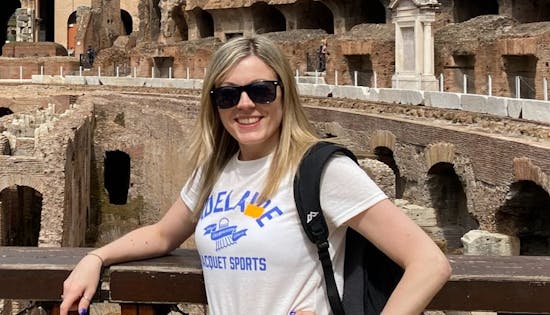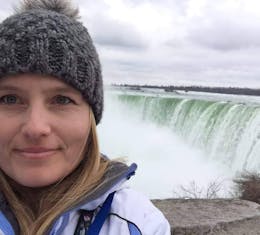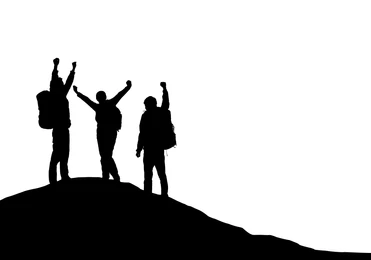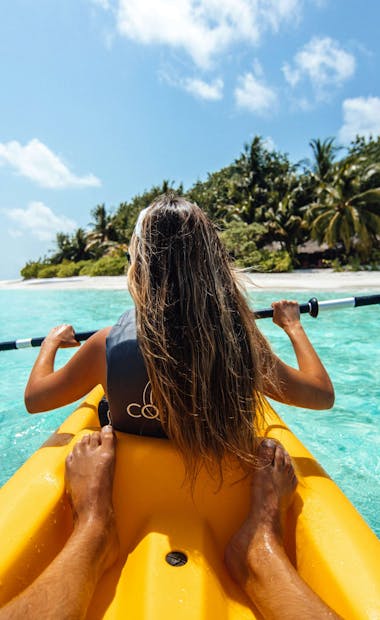Inca Trail & Machu Picchu
Trek The Inca Trail To Machu Picchu
Popular tours
- Save5%
 View Tour
View TourClassic Inca Trail & Machu Picchu - 4 Days
- Cusco to Cusco
- Age group: 3 - 99
- Max group size: 16
Was:£605From£572 - Save6%
 View Tour
View TourThe Inca Trail & Sacred Valley - 8 Days
- Cusco to Cusco
- Age group: 12 - 99
- Max group size: 16
Was:£869From£821 - Save6%
 View Tour
View TourSacred Valley And Short Inca Trail - 3 Days
- Cusco to Cusco
- Age group: 12 - 99
- Max group size: 16
Was:£593From£560 - Save17%
 View Tour
View TourMachu Picchu Adventure - 8 Days
- Lima to Lima
- Age group: 12 - 100
- Max group size: 16
Was:£1,279From£1,056 - Save6%
 View Tour
View TourSalkantay Trek & Machu Picchu - 4 Days
- Cusco to Cusco
- Age group: 12 - 99
- Max group size: 10
Was:£409From£386 - Save20%
 View Tour
View TourJourneys: Machu Picchu and the Amazon - 10 Days
- Lima to Cusco
- Age group: 12 - 100
- Max group size: 16
Was:£2,449From£1,949
Trek the Inca Trail and make lifelong memories
Trek the Inca Trail to Machu Picchu and discover ancient Andean civilisation.
Hike the Inca Trail your way with various packages available
Best Price Guarantee and flexible payments plus ATOL protection
Our travel experts can help you find the dream Inca Trail tour
Peru's Inca Trail is one of the world's most renowned trekking routes. It offers intrepid travellers a unique opportunity to immerse themselves in ancient Andean culture while crossing a network of stone paths laid by the ancient Incas. The crowning jewel of the Inca Trail awaits at journey's end: Machu Picchu, the enigmatic 'Lost City of the Incas'. As you approach this awe-inspiring citadel, shrouded in mist and perched atop a lush green ridge, you'll feel a sense of wonder and reverence. Whether you're a seasoned trekker seeking a new challenge or a curious adventurer eager to uncover the secrets of the Andes, walking the Inca Trail will leave you with lasting memories.
Experts in Inca Trail holidays
"Hikers can expect a physically challenging but immensely rewarding journey, culminating in the awe-inspiringsight of Machu Picchu at sunrise. This iconic destination is a breathtaking and unforgettable reward foranyone who undertakes the trek. Along the way, you'll pass through the ancient ruins of Wiñay Wayna, a beautiful, terraced site that few visitors get to experience. The camaraderie with fellow trekkers and guides, especially during meals and campfires under the starry Andean sky, adds a unique sense of community and connection to this incredible adventure." Melissa, travel advisor at The Adventure People
What Is The Inca Trail?
The Inca Trail is an ancient network of pathways that stretches across the Andes Mountains in Peru, connecting important sites and settlements of the Inca Empire. This historic trail is renowned for its significance in Inca culture, as well as its stunning natural beauty and archaeological treasures. It served as a crucial route for the Incas to travel between their administrative centres, religious sites and agricultural areas.
Today, the most famous section of the Inca Trail is the route that leads trekkers to the spectacular archaeological site of Machu Picchu. This particular trail, often referred to as the 'Classic Inca Trail', begins near the town of Ollantaytambo in the Sacred Valley. From there, it winds its way through diverse ecosystems, including lush cloud forests and high-altitude mountain passes, before reaching the iconic citadel of Machu Picchu.
Along the way, trekkers encounter ancient ruins, including temples, terraces and settlements, providing insights into the remarkable engineering and architectural achievements of the Inca civilisation. Due to its cultural significance and natural beauty, the Inca Trail has become one of the most popular trekking routes in the world, attracting travellers from all corners of the globe. However, to preserve its delicate environment and protect its archaeological sites, access to the Inca Trail is limited, and you must obtain permits from the Peruvian government before visiting.
How Long Is The Inca Trail?
The classic Inca Trail trek to Machu Picchu typically covers approximately 26 miles (42 kilometres). This distance is spread out over four days of hiking, with trekkers covering varying terrain, including steep ascents, descents and sections of flat paths. The trek begins at Kilometre 82, located near the village of Piscacucho, and follows a winding route through diverse landscapes, including Andean mountains, cloud forests and subtropical valleys. Along the way, hikers pass by numerous Inca ruins, such as Llactapata, Runkurakay, Sayacmarca and Wiñay Wayna, each adding to the sense of adventure and historical significance of the journey. On the final day of the trek, hikers rise early to make their way to Inti Punku, or the Sun Gate, where they catch their first glimpse of the awe-inspiring citadel of Machu Picchu nestled amidst the mountains. From there, trekkers descend to the site, where they have the opportunity to explore the ancient ruins and soak in the breathtaking views before concluding their journey.
While the classic Inca Trail trek spans four days, there are also alternative trekking routes, some of which are shorter or longer in duration, catering to different preferences and fitness levels.
How High Is The Inca Trail?
The highest point along the classic Inca Trail to Machu Picchu is Warmiwañusca, commonly known as Dead Woman's Pass, which stands at an elevation of approximately 4,215 metres (13,828 feet) above sea level. This high mountain pass is reached on the second day of the trek and is understandably one of the most challenging sections with a steep ascent and high altitude. Throughout the trek, hikers encounter various elevation changes, including sections of both ascent and descent. While the highest point is Dead Woman's Pass, there are other notable high points along the trail, such as the Runkurakay Pass (3,950 metres / 12,959 feet) and the Phuyupatamarca Pass (3,670 metres / 12,040 feet).
The altitude and rugged terrain of the Inca Trail can present you with physical challenges, particularly if you're not accustomed to hiking at high elevations. It's important to acclimatise, stay hydrated and listen to your body to ensure a safe and enjoyable trekking experience. Before you go, training hikes at home can prepare you for the physical challenge.
How Fit Do I Need To Be?
Trekking the classic Inca Trail to Machu Picchu requires a moderate level of fitness. While you don't need to be an athlete, you must be in reasonably good physical condition to fully enjoy and complete the trek. Here are key factors to consider regarding fitness levels for walking the Inca Trail:
1. Endurance: The Inca Trail involves hiking for several consecutive days, covering approximately 26 miles (42 kilometres). You'll be walking for several hours each day, often on uneven terrain with varying degrees of ascent and descent. Building endurance through regular exercise such as hiking, walking, running or cycling can help prepare you for the physical demands of the trek.
2. Strength: Trekking the Inca Trail also requires leg strength, particularly for ascending steep inclines and descending rugged terrain. Exercises such as squats, lunges and calf raises can help build the necessary muscle strength to tackle the trail's challenges.
3. Altitude acclimatisation: Much of the Inca Trail is at high altitude, with the highest point reaching over 4,200 metres (13,800 feet) above sea level. Altitude sickness can affect trekkers who are not properly acclimatised to the elevation, leading to symptoms such as headaches, nausea and fatigue. Spending a few days in Cusco or other high-altitude locations before starting the trek can help your body adjust to the thinner air.
4. Mental preparedness: In addition to physical fitness, mentally preparing is crucial for completing the Inca Trail. The trek can be challenging at times, so maintaining a positive attitude, pacing yourself and staying motivated are essential for success.
While the Inca Trail is suitable for most people with a moderate level of fitness, it's always a good idea to consult with a healthcare professional before undertaking any strenuous physical activity, especially if you have pre-existing medical conditions. Additionally, listening to your body, taking breaks when needed and staying hydrated are important to ensure a safe and enjoyable trekking experience on the Inca Trail.
Is The Inca Trail Dangerous?
The Inca Trail is not inherently dangerous, but like any outdoor adventure, it presents certain risks and challenges that should be taken seriously. Some factors to consider include:
1. Terrain: The trail includes steep ascents, descents, uneven steps and narrow paths, particularly around mountain passes and sections of the trail. Pack sturdy walking boots to safely navigate suchterrain.
2. Weather: Conditions along the trail can be unpredictable, with the potential for rain, wind and cold temperatures, especially during the rainy season (November to March). Proper gear and clothing are essential to staying warm and dry.
3. Health and safety: Basic precautions should be taken to ensure health and safety on the trail, including staying hydrated, wearing appropriate footwear, using sunscreen and following the advice of experienced guides. Pack a basic first aid kit to deal with scrapes and cuts that you may get from the rough terrain.
4. Permits and regulations: Access to the Inca Trail is regulated by the Peruvian government, and you must obtain permits through licensed tour operators. Additionally, camping along the trail is only permitted at designated campsites, and certain rules and regulations must be followed to protect the area's environment and cultural heritage.
Overall, while the Inca Trail presents challenges, it is a well-travelled route with experienced guides and support staff available to assist you along the way. With proper preparation, fitness and awareness of potential risks, hundreds of thousands of travellers successfully complete the trek each year. Contact us today if you want to be next in line!
When Is The Best Time To Trek The Inca Trail?
The best time to trek the Inca Trail is during the dry season, which typically runs from May to September. During these months, the weather is generally more predictable. There is minimal rainfall and clearer skies, making for better trekking conditions, which means clearer views of the surrounding landscapes and archaeological sites.
Within the dry season, the peak months of June, July and August tend to be most popular to trek the Inca Trail, as the weather is typically at its best and the trail can be busy with other travellers. If you prefer to avoid crowds, consider trekking during the shoulder months of May or September when the weather is still favourable, but there are fewer tourists on the trail.
It's worth noting that while the dry season offers more favourable weather conditions, it can also be colder, especially at night and at higher elevations. Additionally, permits for the Inca Trail tend to sell out quickly during the peak months, so it's essential to book your trek well in advance to secure your spot.
If you don't mind the possibility of encountering rain, trekking during the shoulder seasons of April or October can still offer a rewarding experience. The paths will likely be quieter and permits will be easier to secure.
Overall, the best time to trek the Inca Trail depends on your preferences for weather, crowds and availability of permits, but the dry season from May to September is generally considered the optimal time for most trekkers.
What Do I Need To Trek The Inca Trail?
Trekking the Inca Trail requires careful preparation and packing to ensure a safe and enjoyable experience. Here's a list of essential items you'll need:
1. Permits: Obtain permits well in advance through a licensed tour operator. The Inca Trail permits are limited and can sell out months in advance (these are included in all of the treks on our site).
2. Appropriate clothing:
Moisture-wicking base layers
Insulating layers (fleece or down jacket)
Waterproof and breathable jacket and pants
Sturdy hiking boots with good ankle support
Comfortable socks (synthetic or wool)
Hat or beanie for warmth
Gloves or mittens
Sunglasses and sun hat
3. Backpack: A comfortable daypack to carry your essentials, usually around 20-30 litres in size.
4. Sleeping gear: If you're camping along the trail, you'll need a sleeping bag suitable for cold temperatures and a lightweight sleeping pad for insulation and comfort.
5. Trekking poles: Optional but helpful, especially for steep ascents and descents.
6. Water and hydration: Bring a reusable water bottle or hydration reservoir and purification tablets or a filter to treat water from streams along the trail.
7. Snacks and meals: High-energy snacks like nuts, dried fruits, energy bars and trail mix. If you're not on a guided tour, you'll need to bring your meals or arrange for a porter service.
8. Toiletries and personal items:
Toilet paper and a small trowel for waste disposal
Biodegradable soap
Toothbrush and toothpaste
Sunscreen and lip balm with SPF
Insect repellent
Personal medications and first-aid kit
9. Headlamp or flashlight: Essential for navigating camp at night or early morning starts for summit attempts.
10. Camera: Capture the stunning scenery and archaeological sites along the trail.
11. Cash: Bring enough cash for tipping guides and porters, and purchasing snacks or souvenirs along the way.
12. Travel documents: Passport, travel insurance and any necessary permits or tickets.
It's crucial to pack light and only bring what you need, as you'll be carrying your gear throughout the trek. Additionally, be prepared to pack out all rubbish and adhere to Leave No Trace principles to minimise your impact on the environment.
Why choose The Adventure People for trekking the Inca Trail?
Monthly payments
Spread the costs with no interest or additional fees.
Best Price Guarantee
We won't be beaten on price. If you find this adventure at a lower price, please get in touch!
Reserve now & pay later
Reserve your adventure today and pay later at no extra cost.
ATOL protected
Book with confidence.
Speak to our experts
Call or email our expert team to find out more and get help with ideas and planning of your Inca Trail adventure.
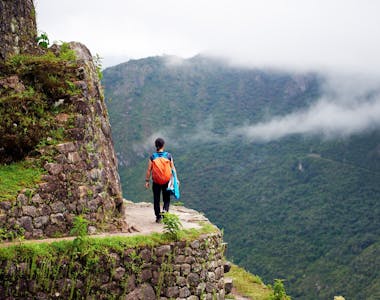
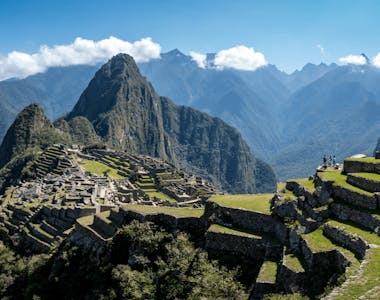
Book With Confidence
Monthly Payments
Spread the costs with no interest or additional fees
Best Price Guarantee
We won't be beaten on price. If you find this adventure at a lower price please get in touch!
Reserve now & pay later
Reserve your adventure today and pay later, free of charge
ATOL protected
Book with confidence
Hold your space today, for free
or book your trip with a deposit and then pay the rest in instalments.
Reserve your flights with us
Add flights to your booking and we'll take care of the rest. You'll get 24/7 support from our team & ATOL protection.
Speak to our experts
Call or email our expert team to find out more and help with ideas and planning.
